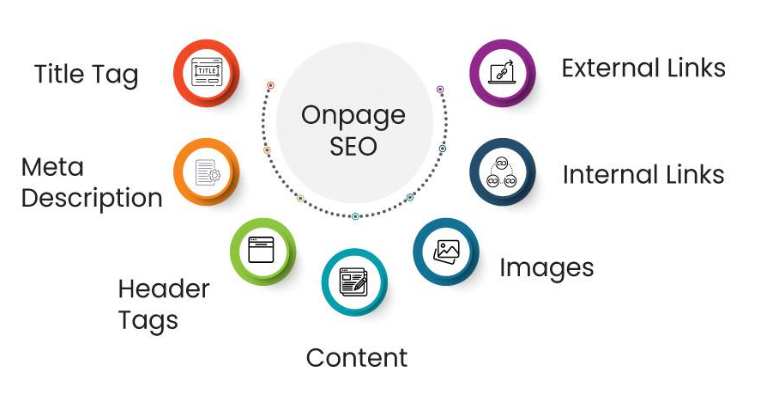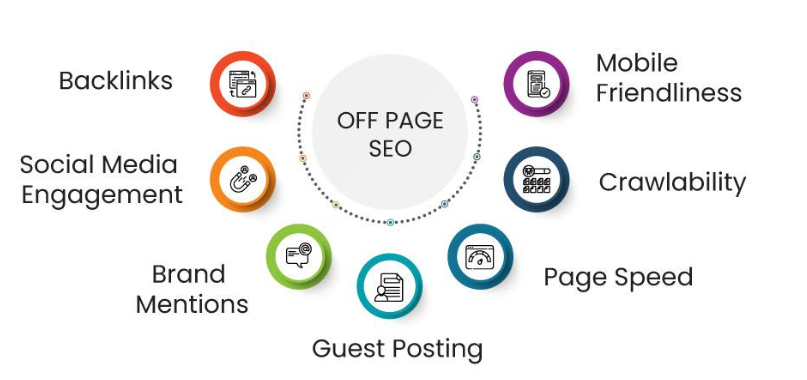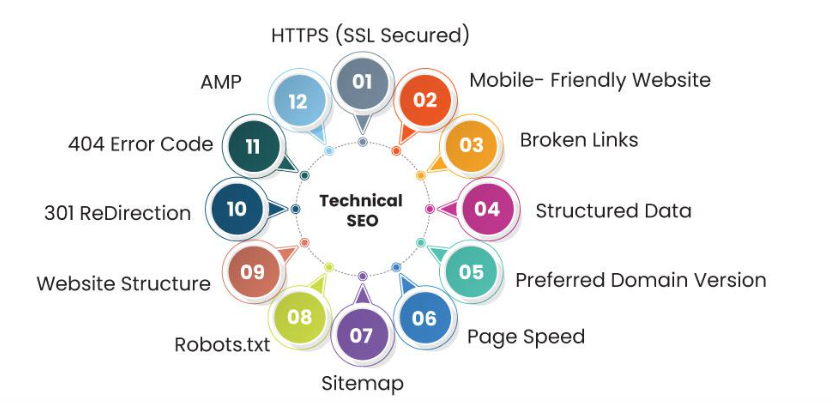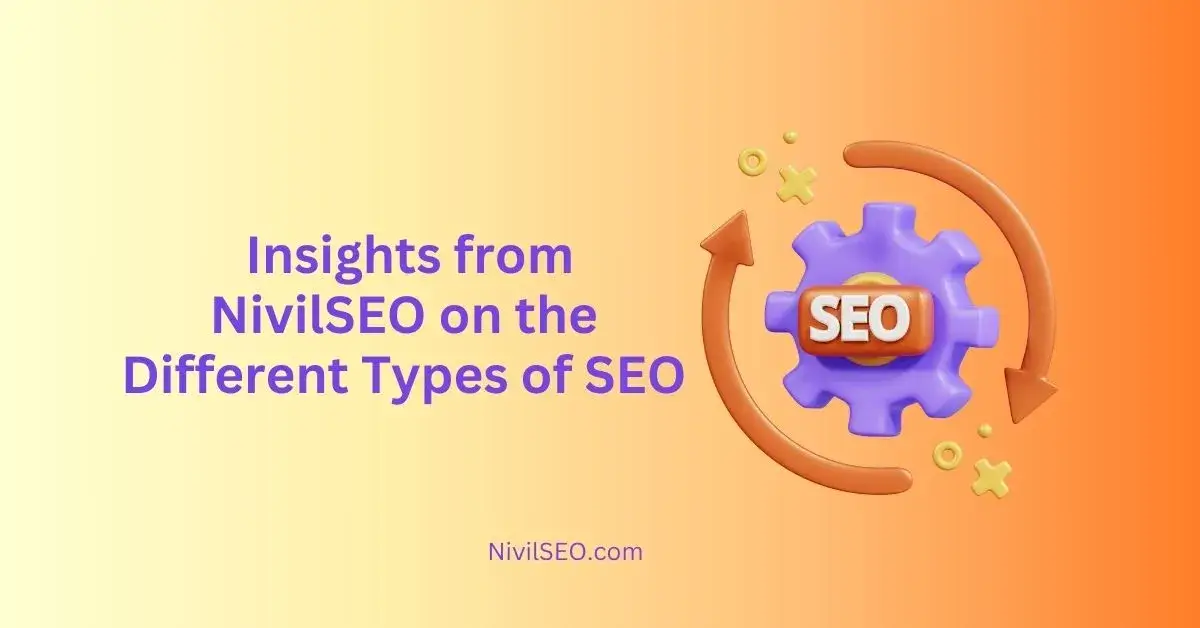SEO generally refers to practices and techniques which enhance a website to achieve higher visibility and rank in search engines. As you get deeper into the subject of SEO, you will find different types of SEO with unique strategies attached to each. It’s jarring, but these differences are the only way you can effectively optimize. We have handpicked this blog by NivilSEO,an SEO expert Dubai , to give you the comprehensive overview of types of SEO in navigating this complex scope of work.
1. On-Page SEO

On-page SEO deals with the optimization of single web pages to raise their ranks and subsequently their visits in search engines. This comprises:
- Title Tag: Short, descriptive, and keyword-rich.
- Meta Description: Informative summary encouraging clicks.
- Header Tags: Structured in a way that highlights the main headers.
- Content: Relevant, rich in keywords, and quality content..
- Images: Optimized with alt tags that describe the images and web optimized.
- Internal Links: Connects other pages that exist on the website.
- External Links: Provides for information at credible sites.
Benefits: Generates better rankings, high CTR, good user experience, crawlability, and indexability.
2. Off-Page SEO

Off-Page SEO Consider outside factors to get your site better ranked, basically; backlinks, engagement through social media, brand mentions, and guest posting.
Elements:
- Backlinks: Links from other sites that point authority.
- Social Media Engagement: Any action that makes your site more visible and attracts visitors
- Brand Mentions: The number of times your brand appears online.
- Guest Posting: Posting content elsewhere with links to your site.
Benefits: Better rankings, higher awareness of your brand, more backlinks, higher traffic.
3. Technical SEO

Technical SEO involves optimizing the technical aspects of a website to improve its crawling and indexing by search engines.
Elements:
- Website Structure: Logical hierarchy and easy navigation.
- Website Speed: Fast loading times.
- Mobile-Friendliness: Optimized for mobile devices.
- Security: SSL encryption and secure hosting.
- XML Sitemap: Helps search engines index site pages.
Benefits: improved rankings, more organic traffic, enhancement of user experience, and increased crawlability and indexability.
4. Local SEO
Local SEO refers to the optimization targeting clients based within a given geographical region by optimizing a website to rank in local search results.
Elements:
- Google My Business: Optimized business listing.
- On-Page SEO: Location-specific keywords and NAP consistency.
- Local Citations: Consistent business listings.
- Online Reviews: Positive reviews on platforms like Google and Yelp.
- Mobile Optimization: Ensuring mobile-friendly design.
Benefits: Increased Visibility at the local level ,Targeted traffic through location , Customers increasing engagement, Better brand reputation.
5. E-Commerce SEO
E-Commerce SEO optimizes online stores to make them more visible and offer more sales.
Elements:
- Keyword Research: Keywords related to the product.
- Product Descriptions: Unique descriptions containing all the needed keywords in the product.
- On-Page Optimization: Meta titles, meta descriptions, Headers, Alt text must be optimized.
- User-Friendly URLs: The URL is clear and to the point.
- Site Structure: Logical and intuitive navigation.
- Mobile Optimization: Mobile-friendly design.
Benefits: Increased visibility, improvement of product discovery, better customer experience, increased conversion rates.
6. Video SEO
Video SEO optimizes video content to rank higher on the SERPs.
Elements:
- Keyword Research: Reconciling keywords relevant to video
- Video Title: Titled thought-provoking and keyword rich
- Video Description: Detailed and keyword rich.
- Tags: Descriptive and relevant tags.
- Thumbnail Optimization: Attractive and juicy thumbnails.
- Transcription and Closed Captions: Improvement of accessibility and content understanding
Benefits: Increased visibility, more targeted traffic, improved engagement, stronger brand awareness.
7. Image SEO
An image SEO would imply optimizing images to rank better in search result pages.
Elements:
- File Names: Descriptive, keyword rich, and optimized.
- Alt Text: In simple clear, and concise texts.
- Image Size and Compression: Optimized for web.
- Image Format: The appropriate format (JPEG, PNG, WebP).
- Responsive Images: Suitable for various screen sizes.
- Image Sitemap: Assists search engine crawl of images.
Benefits: Increased visibility, discoverability, UX improvement, Brand Recognition.
8. International SEO
International SEO optimizes a website to target audiences in different countries or regions.
Elements:
- Geotargeting: Specifying target countries.
- Hreflang Tags: Indicating language and regional targeting.
- Country Code TLDs: Using country-specific domain extensions.
- Subdirectories and Subdomains: Organizing content by language or region.
- Localized Content: Culturally and linguistically appropriate content.
- Currency and Pricing: Local currency and pricing strategies.
Benefits: Increased international visibility, improved engagement, stronger brand trust, access to new markets.
9. Voice SEO
Voice SEO optimizes content for voice search and voice-activated devices.
Elements:
- Natural Language Keywords: Conversational keywords.
- Featured Snippets: Aiming for concise, information-rich snippets.
- Local Optimization: Optimized for location-specific searches.
- Conversational Content: Mimicking natural speech patterns.
- User Intent Understanding: Addressing different query intents.
Benefits: Increased visibility in voice search, improved user experience, stronger brand awareness, access to new audiences.
10. YouTube SEO
YouTube SEO optimizes YouTube videos and channels to rank higher in YouTube’s search results.
Elements:
- Keyword Research: Identifying relevant keywords.
- Video Title: Compelling, keyword-rich titles.
- Video Description: Detailed, informative descriptions.
- Tags: Relevant tags.
- Thumbnail Optimization: Custom, attractive thumbnails.
- Video Transcript and Closed Captions: Improving accessibility and content understanding.
Benefits: Increased visibility, more views, higher rankings, improved engagement, increased brand awareness.
11. Social SEO
Social SEO optimizes a website and social media presence to improve search engine rankings.
Elements:
- Social Signals: Likes, shares, comments.
- Brand Visibility and Authority: Active social media profiles.
- Link Building: Attracting backlinks through social shares.
- Local SEO: Consistent business profiles on social media.
- Content Distribution: Promoting content on social platforms.
- Social Media Profiles in Search Results: Ensuring profiles appear in SERPs.
Benefits: Increased visibility, improved brand awareness, enhanced credibility, higher search engine rankings, increased traffic.
12. Content SEO
Content SEO is optimizing the web content so that it appears more relevant and visible for search engines.
Elements:
- Keyword Research: Top-performing keywords.
- Quality and Relevance: Useful, relevant content.
- Keyword Placement: Strategic keyword usage.
- Content Structure: Clearly structured and easy to read with headings.
- Meta Tags: Attractive meta titles and descriptions.
- URL Optimization: Friendly URLs that are both user-friendly and full of keywords.
Benefits: Improved organic traffic, increased brand awareness, higher engagement, lead generation, and sales.
Conclusion
Understanding the different types of SEO is essential for improving online visibility. From on-page and off-page SEO to technical and local SEO, each type plays a crucial role in enhancing a website’s search engine performance. By leveraging these various SEO strategies, businesses can achieve better rankings, attract more traffic, and ultimately drive growth and success online.










